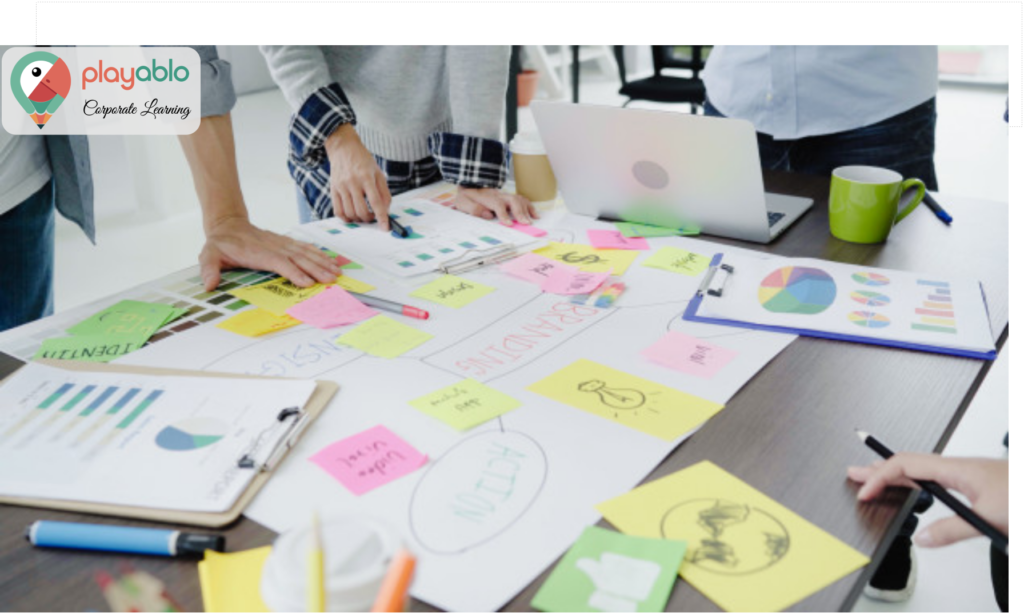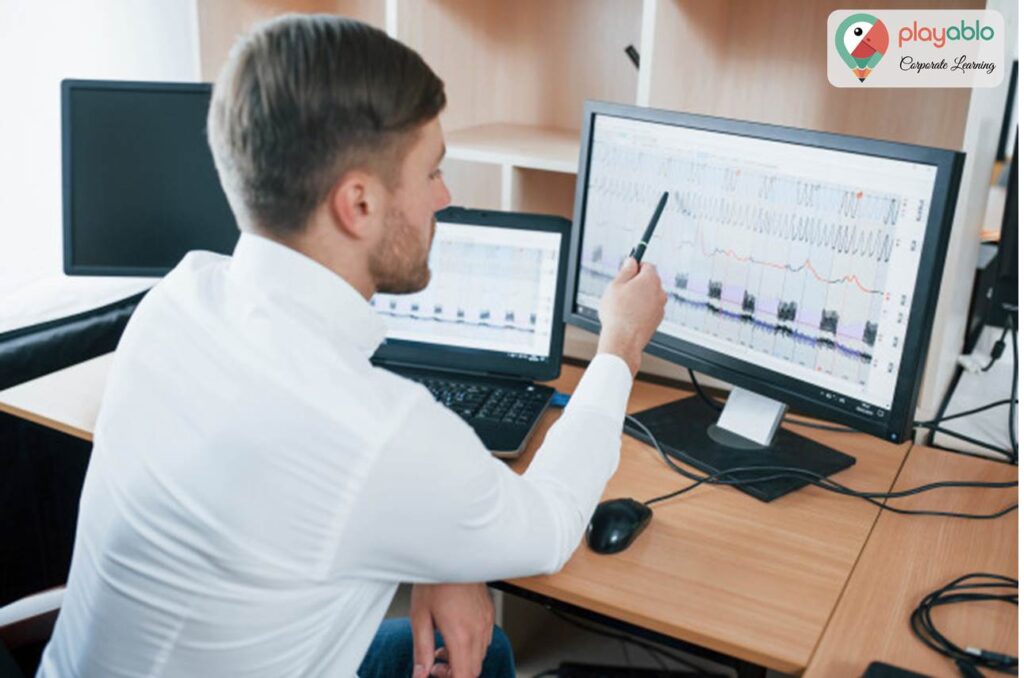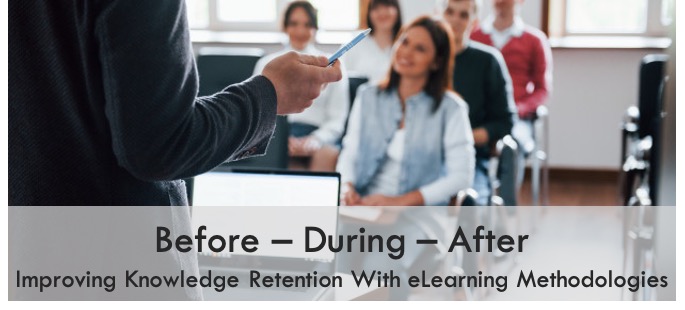What’s training without practical application and knowledge retention? Following a learning session, your employees must demonstrate their acquired skills in solving real-life issues at the workplace. Of course, you have invested a considerable amount of your resources in training your staff. Therefore, there should be a quantifiable Return on Investment. You do not want your team to recall theories, recite statistics, and memorize case studies. Rather than displaying troubleshooting tips, your employees MUST be able to solve actual problems.
Read More: Calculating ROI on LMS Investment
However, here is the thing. Many organizations have approached us, saying that delivering training sessions and getting the desired outcome is not always easy. Knowledge retention and transfer are complicated since all humans have their learning curves. You cannot develop a one-size-fits-all course and expect your entire workforce to respond similarly. For instance, gamified software might seem appealing to one, while it can appear complicated to another. Again, someone may get a good score on a quiz but won’t be able to apply the knowledge in tackling an issue in real-time.
Read More: Impact of Gamification in Corporate Learning
Ad: PlayAblo’s Enterprise-Grade Micro-Learning platform is for the modern corporate learner. Micro-Learning, along with assessments and gamification features, ensures learning outcome measurement along with sustained engagement.
Find out more and request a custom demo!
But why is learning ineffective? The ATD International Conference & Exposition 2016 revealed that inadequate knowledge transfer is the most common reason.
So, what’s the way out? Start by creating an effective eLearning program that leads to maximum knowledge retention. And for this, you must consider the three stages of any training program — pre, during, and post-learning session. Therefore, let’s begin!
Table of Contents
Pre-training Tips for Knowledge Retention

Before you deploy any online training program, we advise you to follow the following three steps:
Thorough Research
Hold extensive brainstorming sessions to analyze the existing skills of your staff. Understand what additional knowledge they need to acquire to excel at their respective jobs. Now, kick off the design process after gaining insights into the requirements. Create eLearning courses with relevant content that helps learners perform well in their careers. You can ask your employees to fill up self-assessment forms so that they can identify their gap areas. You can then work on filling these gaps with targeted training modules.
Read More: 5 Strategies to Design an LMS for Millennials and Gen Z
End Objectives
It is always essential to identify the training objectives before you begin creating the course. When you follow this step, you ensure that you have incorporated a common organizational goal. You can work toward achieving the related milestones and focus on finally reaching the end goal. When you are sure of your objectives initially, you have clarity on your audience expectations, learning content, and training outcomes.
Business Goals
It’s incredibly critical to have a clear connection between the organizational business goals and the skills needed to achieve them. It will enable employees to gain motivation and have quantifiable targets.
Training Delivery
It would be best if you always ascertained that your training has the maximum impact on learners. Trainees should receive learning sessions at the exact time trainees need them. For instance, your sales reps might require to know about the latest update on a product before pitching it to the client. Just-in-time, agile training is beneficial since it enables employees to implement knowledge retention instantly.
Read More: Mobile Learning for Accelerating Sales Training (and More Business!)
Interaction With Learners
To motivate the learners to join training sessions, the L&D leadership must make sure to meet them and inform them about the significance of the learning program. Employees should understand how learning outcomes align with the company’s business goals. They must also be aware of how training will help them progress in their career paths with their knowledge retention. On the other hand, managers should understand the importance of learning and create a seamless learning model for their team members.
During the Training Tips for Knowledge Retention

Clarity on How a Learning Session Will Benefit the Trainee
Any learner would want to know how a training session will benefit them. Hence, you should be able to offer a satisfactory and credible answer to this question. After all, it is a known fact that knowledge transfer is more efficient when employees understand their expected skill levels after a particular training session.
Bite-sized Content
Chunking content into bite-sized pieces makes learning materials clutter-free and relevant. Since the modern learner is extremely busy, they prefer to consume information in manageable chunks. Ensure that you review the learning objectives while chunking content. Try to include only relevant content while doing away with all the unnecessary parts.
Read More: Micro-learning for Super-efficient Workplace Training
Prior Learner Knowledge
It is always a good idea to comprehend, recall, and retain new concepts by discovering underlying patterns. Therefore, talk to your learners and attempt to gain insights from their prior knowledge or experiences. Establish similarities and patterns and then design a new concept. Analogies and metaphors are excellent instructional tools to connect seemingly distinct ideas. However, this does not mean that you do not explain the differences at all!
Instructional Strategies
You can coerce the contemporary learner into applying their newly-acquired knowledge only they are confident that it will help them resolve their real-life problems. Therefore, it is important to embed your learning sessions with realistic scenarios that simulate learners’ obstacles in the organisation.
Connection With Real-life Problems
Adult learners feel more motivated to apply the learning when they can see the relevance of the course to their job responsibilities. So, take every opportunity to establish this relevance. Create scenarios or stories that demonstrate positive outcomes. Incorporate case studies and video testimonials to add legitimacy. Use these media to explain how the learner can improve his on-job performance, as the people in the case studies and videos have done after taking the course.
Learning Objectives
It does not matter if you are developing a simulated scenario or planning an activity. Whatever you do, you should continue reviewing the learning objectives. This step makes sure that your training content remains relevant. You should not incorporate any information that does not directly translate to the end goals of the course. It would help if you concentrated on connecting the dots. Each learning element should eventually lead to the final objectives of the training program.
Segmented Training Modules
Spacing out and delivering your course in modules come with several upsides. And the most critical benefit arrives in the form of knowledge retention and transfer. Once employees return to work after completing each module, they get an opportunity to apply their newly-acquired knowledge. Because there is not much lag between learning and application, learners will be less likely to forget the content.
Ad: PlayAblo’s Enterprise-Grade Micro-Learning platform is for the modern corporate learner. Micro-Learning, along with assessments and gamification features, ensures learning outcome measurement along with sustained engagement.
Find out more and request a custom demo!
Action Plans
Guide your staff in creating action plans that help them when they return to their workstations. These action plans lay out the guidelines that will help learners apply what they have learned during the training. For instance, make action plans to guide learners just after the training and six months later. Also, ensure that the goals are realistic. Specify not only what learners should do to carry out a particular task but also how to troubleshoot.
Post Training Tips for Knowledge Retention

Social Learning
You can best achieve Knowledge retention via examples. Learners should be able to share their learning with peers or discuss their achievements with peers. They should also learn from mentors. Social learning is a powerful tool that connects learners and trainers to discuss and share stories. In-person meetings, chat groups, forums, and videos of trainees sharing their stories hosted on the Intranet are effective ways to incorporate social learning in the learning process. This social aspect of the learning process increases motivation and facilitates a smooth transfer of knowledge.
Read More: Integrating LIVE Classes in your LMS
Refresher Courses
Learners often state that they find it challenging to retain key learning points after the training is over or recall these concepts when needed. These obstacles diminish the effectiveness of the practical application of knowledge. A refresher course can serve the purpose of information recalls. Crisp and straightforward refreshers offer a summary of the key learning concepts. You can connect such refresher programs with problem-solving sessions so that employees can help each other by recounting the problems they had encountered while applying the acquired concepts.
Follow-up Sessions
Reflection plays a vital role in identifying gaps in training and realising knowledge retention roadblocks. What you can do is — send follow-up emails to trainees after about a month to reinforce key learning points. You can also organise post-training follow-up sessions to give supplementary lessons. You can use these options to allow trainees to practice their skills or discuss their experiences as they try to apply their knowledge on the job.
Practice, Practice, Practice!
Finally, it is a known fact that repeated practice solidifies knowledge retention. Give the employees opportunities to apply the skills learned from the training program. As per research, the absence of opportunities minimises the ability of learners to resolve real-life problems.
Conclusion
Knowledge retention is a challenging task for educators, business managers, and eLearning developers. With the tips above, you can cement your plan for a comprehensive training program. Or, if you opt for a solution like PlayAblo’s LMS, our experts here will do the job for you!







1 Comment
Comments are closed, but trackbacks and pingbacks are open.